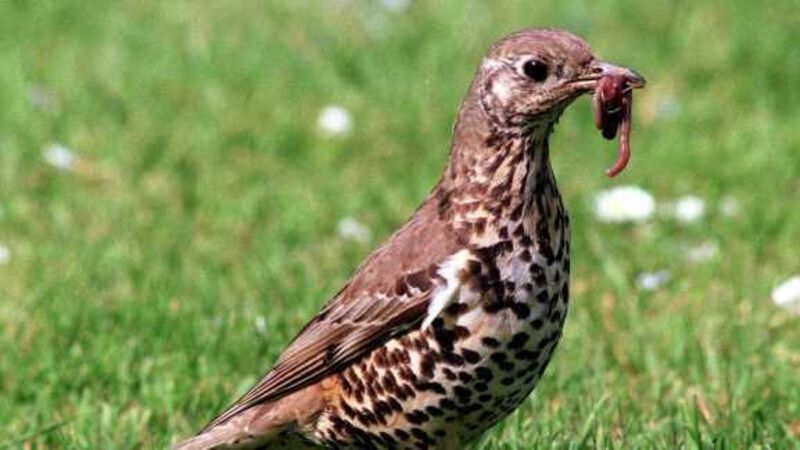Mistle thrush sings to welcome stretch in evening

It starts nesting very early, sometimes laying eggs before the end of February, which means the male bird starts singing to establish breeding territory in January. It sings from a tall perch, issuing notes that are similar to those of its close relatives, the song thrush and the blackbird, though slower and less elaborate. However, if the mistle thrush is a bit short on melody it certainly doesn’t lack volume. In good conditions it can be heard 2km away.
Most song birds prefer still conditions for their performance, which is why birdsong is loudest at dawn and dusk. The mistle thrush is an exception and will sing at all times of day, whatever the weather. The fact that they continue to do so in wind and rain is the reason for the old English name ‘storm cock’. If this winter continues the way it’s started we should consider adopting it as the Irish national bird.
They’re the largest thrush species in Ireland and the country name for them is ‘jay thrush’. They’re not remotely related to jays and their plumage is much less colourful but this name is based on close observation. The jay and the mistle thrush share an unusual flight pattern — undulating bounds interspersed with short glides.
Both the Latin name, Turdus viscivorus, and the common English name mean the thrush that eats mistletoe. In England they have a passion for the sticky white berries and play an important role in propagating this parasitic plant. There are a few records of mistletoe growing in Ireland but these are almost certainly the result of introductions by Victorian and Edwardian gardeners and the plant has never naturalised here.
Irish mistle thrushes have to fall back on their second favourite food, the holly berry. If you went out to collect holly before Christmas and found all the berries had gone, the culprit was probably a mistle thrush.
A pair of mistle thrushes will take over a good berry tree — preferably a holly but a rowan or hawthorn will do. They will defend it fiercely against other birds, even much larger ones up to the size of a pheasant. About the only thing that will defeat them is a squadron of determined fieldfares. These thrushes, winter visitors from the boreal forests of northern Scandinavia, tend to travel in flocks and benefit from Voltaire’s remark that ‘god is on the side of the big battalions’.
When mistle thrushes do build a nest it’s cup shaped and mud-lined and usually in the fork of a small tree. They display the same courage and belligerence in defence of the nest that they used to defend their berry tree, attacking larger birds, cats and even humans. The storm cock is quite a tough cookie.










